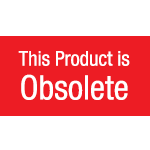
Overview
| Information | WAN Multi-Mode Serial Transceiver |
|---|---|
| Supported Protocols | RS232, RS449, EIA530, V.10, V.11, V.28, X.21, RS485, RS-422, V.35 |
| Supply Voltage (Nom) (V) | 5 |
| No. of Tx | 7 |
| No. of Rx | 7 |
| Data Rate (Mbps) | 10 |
| HBM ESD (kV) | 2 |
| Internal Termination | Basic |
| VL Pin | |
| Temperature Range (°C) | 0 to 70 |
| Package | LQFP-80 |
The SP504 is a single chip device that supports eight (8) physical serial interface standards for Wide Area Network Connectivity. The SP504 is fabricated using a low power BiCMOS process technology, and incorporates a Sipex patented (5,306,954) charge pump allowing +5V only operation. Seven (7) drivers and seven (7) receivers can be configured via software for any of the above interface modes at any time. The SP504 is suited for DTE-DCE applications. The SP504 requires only one external resistor per V.35 driver for compliant V.35 operation.
- +5V Only
- Seven (7) Drivers and Seven (7) Receivers
- Driver and Receiver Tri-State Control
- Reduced V.35 Termination Network
- Pin Compatible with the SP503
- Software Selectable Interface Modes:
- RS-232E (V.28)
- RS-422A (V.11, X.21)
- RS-449 (V.11 & V.10)
- RS-485
- V.35
- EIA-530 (V.11 & V.10)
- EIA-530A (V.11 & V.10)
- V.36
Documentation & Design Tools
Quality & RoHS
Parts & Purchasing
| Part Number | Pkg Code | Min Temp | Max Temp | Status | Suggested Replacement | PDN |
|---|---|---|---|---|---|---|
| SP504MCF | MQFP80 | OBS | ||||
| SP504MCF-L | MQFP80 | OBS | ||||
| SP504MCF-L/TR | MQFP80 | OBS | ||||
| SP504MCM-L | LQFP80 14x14 | 0 | 70 | OBS |
Active - the part is released for sale, standard product.
EOL (End of Life) - the part is no longer being manufactured, there may or may not be inventory still in stock.
CF (Contact Factory) - the part is still active but customers should check with the factory for availability. Longer lead-times may apply.
PRE (Pre-introduction) - the part has not been introduced or the part number is an early version available for sample only.
OBS (Obsolete) - the part is no longer being manufactured and may not be ordered.
NRND (Not Recommended for New Designs) - the part is not recommended for new designs.
Packaging
| Pkg Code | Details | Quantities | Dimensions |
|---|---|---|---|
| LQFP80 14x14 |
|
|
|
| MQFP80 |
|
|
|
Notifications
FAQs & Support
Search our list of FAQs for answers to common technical questions.
For material content, environmental, quality and reliability questions review the Quality tab or visit our Quality page.
For ordering information and general customer service visit our Contact Us page.
Submit a Technical Support Question As a New Question

The Parts & Purchasing section of the product page shows the Status of all orderable part numbers for that product. Click Show obsolete parts, to see all EOL or OBS products.

